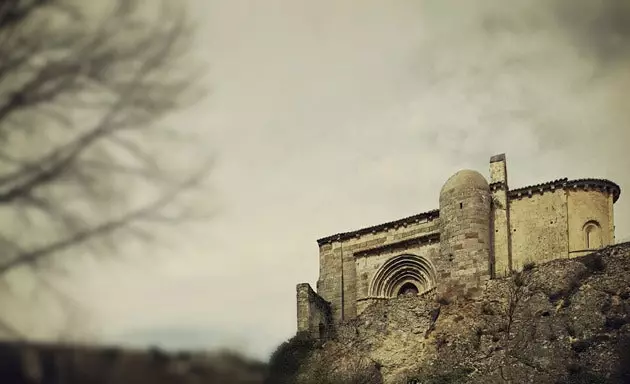
The Romanesque on Instagram (and without yawning)
It is made known: only in the north of Palencia there are about 100 Romanesque rooms, churches and hermitages , built between the 11th and 14th centuries. The number is an outrage, especially if you take into account how rugged the territory is; how hostile the climate can be or the fact that it is so far from that medieval highway that was the Camino de Santiago. I mean, there's something weird here. Strange because it is one of the largest concentrations of art of this type in Europe (and therefore, in the entire world). In Palencia, darling.
1. Ok, let's go there. Since visiting the nearly 100 monuments would take about seven weeks, we wet and we will recommend three of them . One: the hermitage of Santa Cecilia in Vallespinoso de Aguilar , which is located a few kilometers west of Aguilar de Campoo. They planted it on top of a bare, cinematographic and somewhat Draculian rock, they put a cylindrical tower on it that they would later plagiarize in the Torre Agbar in Barcelona and they decorated the portico with disturbing sculptures - that of the knight fighting the monster - so that the faithful would grieve and They went to mass every Sunday. You have to see it yes or yes. Next to it there is a cemetery where until a couple of years ago there was only one grave, as if the rest of the dead had left.
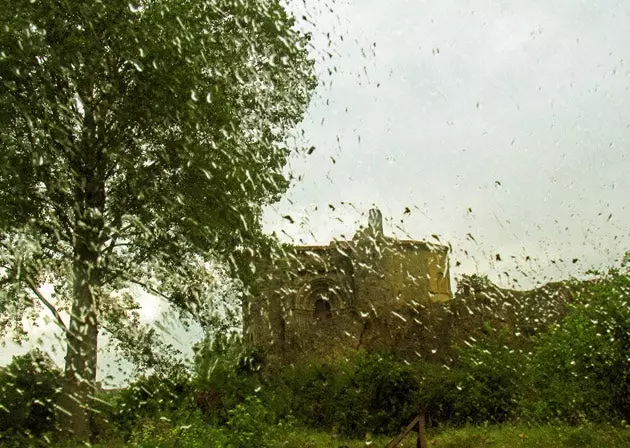
Santa Cecilia in Vallespinoso de Aguilar: you have to see it with or without rain
Two: the church of Revilla de Santullán . We like solitary, rebellious, rustic hermitages and if they are in the boonies, the better, but with this one we must make an exception, because it is in the middle of the town. And you have to do it through its portico, decorated with sculptures – big heads, rigid, almost childlike, as if they were Lego figures - of Jesus and the Twelve Apostles at the Last Supper. The author was so pleased that he sculpted himself larger than Jesus Christ himself and signed the work with a "Michael Me Fecit" that can still be read. Surely, he would end his days in hell. For vain. Better.
Three: this time it is a monolithic hermitage located in the middle of nowhere, that of Santa Eulalia in the Barrio de Santa María . It does not shine for its diabolical sculptures or for the sensationalism of, for example, Vallespinoso because here the story is different: Santa Eulalia is Romanesque perfection. Coherent, collected, purist, without Gothic contamination, with a capital featuring Adam and Eve, disheveled and embarrassing, so expressive that it seems to be taken from a Captain Thunder comic . Perfection was that, simplicity. Today perfection is that and sitting in a nearby meadow, at sunset, to contemplate the building in amazement and, in the background, the parking lot of storks.
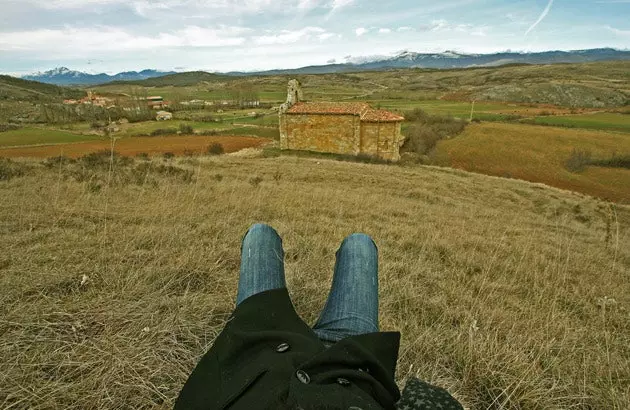
Santa Eulalia in the Barrio de Santa María
two. Two weird things. In Cervera de Pisuerga there is also Romanesque and such, but it is always nice to say that you visit the town to eat the puff pastry bows at the Florida Pastry Shop, in Plaza Carlos Ruiz. Because of the ties and the cave hermitage of San Vicente, which is located on the outskirts. They say it was a church but one prefers to imagine a thousand fictitious nonsense (human sacrifices, Conan the Barbarian sharpening his sword, strange rituals in honor of Cthulu...) that could have taken place there and he is so happy. The exotic atmosphere of the place is enhanced by the rock-cut cemetery next to the hermitage: getting inside one of the cave coffins and resting in it for a few minutes is a magnificent way to meditate on our existence, the tragic meaning and all that.
The other rare space is located in Olleros de Pisuerga, it is the cave hermitage of Santos Justo and Pastor . Perhaps, one day, some writer will talk about it in a cheap historical and esoteric novel and the place will become ultra-famous. It would be a shame. His story goes something like this: nine centuries ago, some monks deduced that it would be cheaper and easier to dig a church out of rock than to build one. and they did . The hermitage once had everything –bedrooms, tombs…- and is still in use today, with its Romanesque arches carved into the rock, its windows carved into the rock, its niches carved into the rock and its disturbing things also carved into the rock, such as 15th century wall paintings. More strange, impossible.
3. Willy Wonka was actually from Palencia. For this reason, Aguilar de Campoo smells like fine sugar. There is no more amazing tourist gadget in Spain: the town that stinks of cookies. This is one of the collateral effects of the local industry, which has been operating for more than a hundred years and has shaped the sentimental stomach of half of Spain. Fontaneda was born here . Gullon, too. Barely ten years ago, the big cookie companies were on the verge of winning because the fashion for cereals killed that traditional tradition of starting the day (and ending it) with a handful of cookies. All this changed again with the crisis (cereals are expensive, cookies are not), and Now the Spaniards are making little boats in the cafe again and, thanks to that, Aguilar still smells like a candy store. How joyful it is to compulsively and irresponsibly buy several kilos of biscuits, significantly reduced, in the stores of the Gullón or Siro factories.
Four. Full on medieval merchandising. The ideal would have been to visit Santa María La Real in the mid-19th century, when after Mendizábal's disentailment, half the monastery was totally abandoned and it was possible to steal a Romanesque capital from the cloister to put it in the living room. In 2012, such misdeeds can no longer be done, but something similar can be done, for example, lose control of the credit card in your bookstore , specializing in medieval art, history and architecture, and packed with appetizing merchandise. They have everything: an ultra-specialized selection of books (alchemy, technical, essay, children's, novel... all medieval), Romanesque stone gargoyles, models... A tip for beginners: the illustrated book 'A village in Romanesque times', made with infinite love. Apart from shopping, Santa María la Real is home to the Museum of Romanesque and Territory where, among other things, it is possible to plan a route with a little focus on the medieval art of the province.
5. Eat Romanesque stones or something similar. The gastronomically correct recommendation is the Convent of Santa María de Mave, where they serve the typical suckling lamb of the area (reservation required) and other Castilian dishes from the book. Not surprising but not disappointing either. In addition, it has a glorious lawn where it is a pleasure to lie down after the coffees, while we let the gastric juices do their work. The other proposal is less obvious: The Baron It is located in Aguilar de Campoo, it has a cuisine as traditional as it is forceful, amazing value for money and a dish with 100% punk attitude : the mountain stew served in a clay pot that no one has been able to finish.
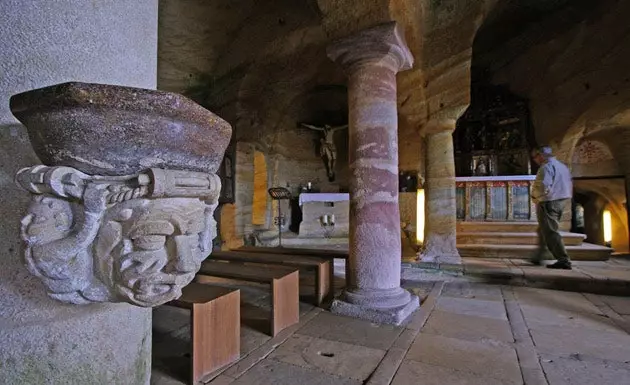
Olleros de Pisuerga: more strange, impossible
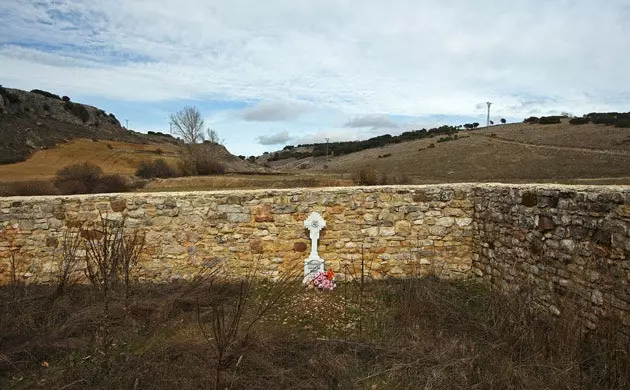
Vallespinoso Cemetery
